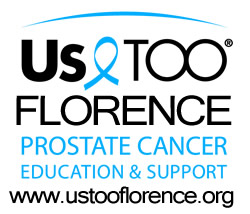|
||||||||
| Home | News You Can Use |
About Us TOO Florence |
Personal Journeys | Slideshows | Contact Us | |||
| Each man's Journey is listed under his BASIC treatment. When you click on one of the names to read a particular Journey, you may see one or more different treatments in bold lettering immediately above the Journey text. You will see (Recurrence) if they are due to a recurrence. Otherwise, they will be treatments used in conjunction with the basic treatment, i.e. Lupron with External Beam Radiation or External Beam Radiation with HDRT/Brachytherapy, etc. | |
Active Surveillance Alternative (Natural) Therapy Cryoablation - Freezing Hormone Therapy Radiation - Brachytherapy Radiation - External Beam Radiation - HDRT Surgery - Open Surgery - Robotic |
My journey with prostate cancer started unbeknownst to me sometime between 2003 and 2007. I can be pretty sure of that because after 2.0 PSA tests in 2001 and 2003, I skipped that test for the next three years. It wasn't until I developed urinary changes that I went back to the doctor for a physical exam in February 2007. My primary care physician did a digital rectal exam (DRE) and found nothing abnormal about my prostate gland. That was reassuring, but because of my urinary symptoms, I insisted on getting a PSA blood test also. As I learned later, the PSA blood test can raise prostate cancer concerns five to 10 years before anything abnormal shows up with a DRE. When the results of my PSA test came back, it was 6.0 three times higher than it was in 2003. There were two things wrong with that picture as far as I was concerned: Even though a normal PSA score tends to gradually rise as one gets older, a PSA of 6.0 was too high for a 70 year old (me) and my 2003 PSA of 2.0 shouldn't have risen to anywhere near a 6.0 less than four years later. That 6.0, plus not feeling that my urinary changes had been satisfactorily explained, told me it was time for action. This led me to press the issue until I was referred to urologist Dr. Bryan Mehlhaff to see what was going on. Knowing what I know now about the importance of annual PSA tests catching a rising PSA, I would never have skipped my PSA tests in 2002, 2004, 2005 and 2006. On March 19, 2007, Dr. Mehlhaff did a 12 needle biopsy and the pathologist reported prostate cancer in four of the needles. The Gleason Score on the cancerous biopsies was predominately 6 (3+3) along with some 7 (3+4). The Gleason Score is an indicator of how aggressive the cancer is with 6 being on the low end and 10 being the ultimate in aggression. Fortunately for me, mine was mostly a non-aggressive cancer. In April 2007, I started attending the Us TOO Prostate Cancer Education/Support Group. This gave me ready access to the latest prostate cancer treatment information, a chance to talk with men who had been through different types of treatment and also question my urologist, Dr. Mehlhaff, who regularly attends the meetings. As a result of all I gained from attending the Us TOO meetings plus privately talking with Dr. Mehlhaff, my choice of treatment came down to a robotic assisted prostatectomy surgery. Let's get it out and be done with it. On June 26, 2007, Dr. Mehlhaff removed my cancerous prostate. During the almost four years since my surgery, my PSA has been undetectable. That is the best report possible! Following a prostatectomy, the prostate is always sent to the pathologist for an analysis to see if the cancer was fully contained or had escaped the gland prior to surgery and to get a final assessment on the Gleason Score. My report was that the cancer was contained and my Gleason Score was all 6 (3+3). This small change from the biopsy report isn't too surprising since the sample in the biopsy is very small and here they had the entire gland to examine. I'm glad it was to my advantage. Like so many other men, I did have to work to recover my continence following surgery. One of the things that helped me was discussing this at the Us TOO meetings and listening to other men share their experiences dealing with it and having Dr. Mehlhaff share the options of medical intervention if it came down to that. What I have found attending these meetings is that side effects of treatment are treatable and can be greatly diminished if not completely eliminated. But, they won't be unless we take a proactive attitude and, with our urologist's guidance, face them head-on. What really pleases me is that I have not only overcome the side effects of treatment, but as far as I am concerned, that very treatment more than likely cured me of prostate cancer. |
| www.ustooflorence.org Copyright © 2010 - 2025 | |

